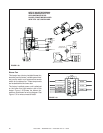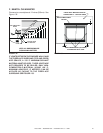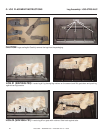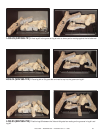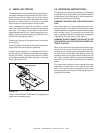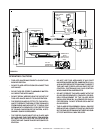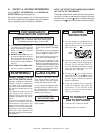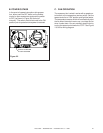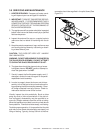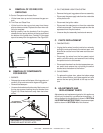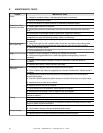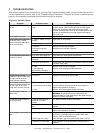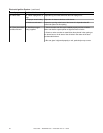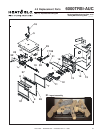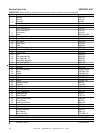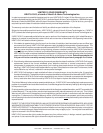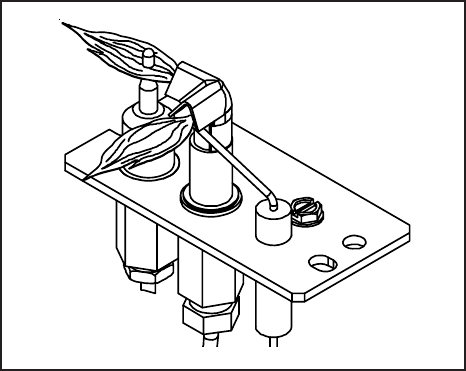
28
Heat & Glo • 6000TRSI-AUC • 2078-900 Rev. G • 12/06
FIGURE 3.1
3.0 SERVICING AND MAINTENANCE
1. HEATER SERVICING: Frequency of heater servic-
ing will depend upon use and type of installation.
2. IMPORTANT: TURN OFF GAS BEFORE SERVIC-
ING APPLIANCE. IT IS RECOMMENDED THAT A
COMPETENT SERVICE TECHNICIAN PERFORM
SERVICE CHECK-UPS AT THE BEGINNING OF
EACH HEATING SEASON.
3. The appliance and flue system should be inspected
before initial use and at least annually by a qualified
field service person.
4. Inspect the external flue cap on a regular basis to
make sure that no debris is interfering with the air
flow.
5. Keep the control compartment, logs, and burner area
surrounding the logs clean by vacuuming or brush-
ing at least twice a year.
CAUTION: THE LOGS GET VERY HOT - HANDLE
ONLY WHEN COOL.
WARNING: DO NOT USE ABRASIVE CLEANERS ON
THE GLASS DOOR ASSEMBLY. DO NOT ATTEMPT
TO CLEAN THE GLASS DOOR WHEN IT IS HOT.
6. The glass door should be cleaned using a house-
hold glass cleaner. DO NOT handle or attempt to
clean the glass when it is HOT.
7. Visually inspect the flexible power supply cord; if
damaged, contact the service agent for a special
replacement cord assembly.
8. In order to properly clean the burner and pilot as-
sembly, turn off the gas to the unit and remove the
logs exposing the burner and pilot assembly. Clean
all foreign materials from top of burner. Check to
make sure that the burner orifice is clean.
Visually inspect the pilot periodically. Brush or blow
away any dust or linen accumulations. If the pilot ori-
fice is plugged, disassembly may be required to re-
move any foreign materials from the orifice or tubing.
When the appliance is put back in service, check burner
flame patterns. Flames should be steady, not floating.
To obtain proper operation, it is imperative that the pilot
and main burner flame characteristics are steady, not
lifting or floating. Typically, the top 3/8 inch of the ther-
mocouple should be engulfed in the pilot flame (See
Figure 3.1).



